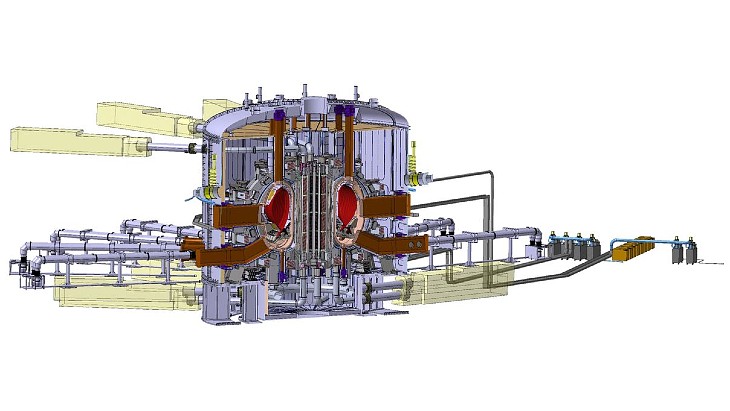Rosatom says that while tungsten is the most suitable material for protective cladding of plasma-facing elements - because of its high thermal conductivity and melting point, low rate of ion and thermal erosion - "it is not suitable for creating a heat-dissipating base due to its high brittleness and is poorly compatible with other metals due to the difference in CLTE (Coefficient of Linear Thermal Expansion) values".
It added: "Specialists intend to solve this problem by mixing a porous tungsten matrix with copper using the vacuum infiltration method. In this case, the porous matrix will be grown on a substrate of monolithic tungsten. This method allows synthesising a part from metal powder layer by layer, controlling its properties for a specific task due to the possibility of optimising the geometric structure."
Pavel Piskarev, Head of the Scientific and Research Institute of Electromagnetic Computing at JSC NIIEFA, said: "Traditional technology allows us to obtain a product of a given porosity with a 'random', non-periodic structure. Our method will allow us to create a product with an optimised layer-by-layer functional-gradient structure due to a volumetric gyroid lattice with controlled pore geometry."
External link to ITER: What is a divertor?
Samples created using the new method have already undergone mechanical testing, laser flash thermal conductivity measurements and microscopic examinations and the next stage is to begin manufacturing the first models. JSC NIIEFA and MISIS (National University of Science and Technology) are also to work together on bronze surfacing on steel for elements of the first wall of the proposed TRT tokamak reactor, "which are subject to weaker heat flows".
JSC NIIEFA completed the preliminary design of Russia's TRT tokamak nuclear fusion reactor last month with it described as "a tokamak with a long discharge pulse, a strong magnetic field and an electromagnetic system made of a high-temperature superconductor ... the construction of the TRT is an important stage in the development of controlled thermonuclear fusion and the creation of a nuclear power reactor in Russia".

(Image: Rosatom)
The preliminary design work for the TRT began in 2022 and leans, among other things, on experience and knowledge gained from the multinational ITER project to build a fusion plant in southern France. Rosatom adds that "at the same time, a large number of new technologies that do not exist anywhere else in the world will be tested for the first time at TRT". A concept paper describes the project as being "developed to facilitate fast and economically sound transition to the pure fusion reactor as well as to the fusion neutron source for the hybrid fusion-fission system". The goal was said to be to build TRT by 2030.





_82983.jpg)
_34792.jpg)
_16403_79272.jpg)


_76087_55556.jpg)



